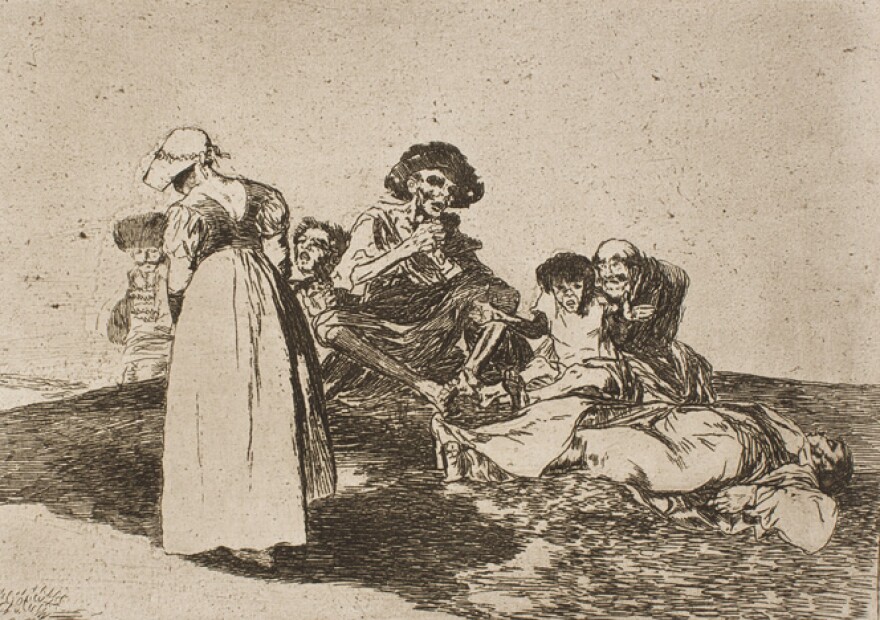Francisco de Goya’s “Disasters of War” is considered one of the most personal and influential print series in the Western canon. This will be the first time the complete series will be shown in St. Louis. Elizabeth Wyckoff, the art museum's curator of prints, drawings and photographs, says the work that was created more than 200 years ago remains relevant today.
“I think the power of his images is that they tell that story and they remind us that these kinds of things have happened in the past, and they’re happening now and they might happen in the future,” she said.
The “Disasters of War” series contain graphic images of war and the horrors visited upon soldiers and civilians alike. Eighty images depict scenes from the French occupation of Spain in the 19th century, ranging from the artist's home city, Madrid, to the Spanish countryside. According to Wyckoff, the work upset traditional representations of war and set the stage for today’s artists to be more critical of combat.
The show opens at the St. Louis Art Museum this weekend and runs through mid-February.
“Normally you would expect an official portrait of the triumph of a general or the death of a general,” she said. “That’s the kind of war-related material you’d expect in Goya’s time. And he’s kind of overturning that idea by making this very personal.”
Goya’s work is paired with prints by French artist Jacques Callot, German Max Beckmann and American contemporary artist Daniel Heyman. Each artist offers his own interpretation of the conflict of his times: Callot addresses the Catholic-Protestant conflict of 17th century Europe, Beckmann tackles World War I, and Heymann’s Amman Portfolio depicts the faces and stories of former Abu Ghraib prisoners.

The exhibit is intended to be a counterpoint to the museum’s upcoming show of Japanese war imagery “Conflicts of Interest” in which artists take a less critical approach to the outcome of war. Gretchen Wagner, Andrew W. Mellon Fellow in Prints, Drawings, and Photographs, contributed to the curation with research assistant Leah Chizek, and senior research assistant Ann-Maree Walker. Wagner said each artist’s work poses a question for the viewer.
“What does it mean to come with a very subjective viewpoint to depict war?” she said, “That’s what we were getting at that, there are many different ways to depict conflict.”



